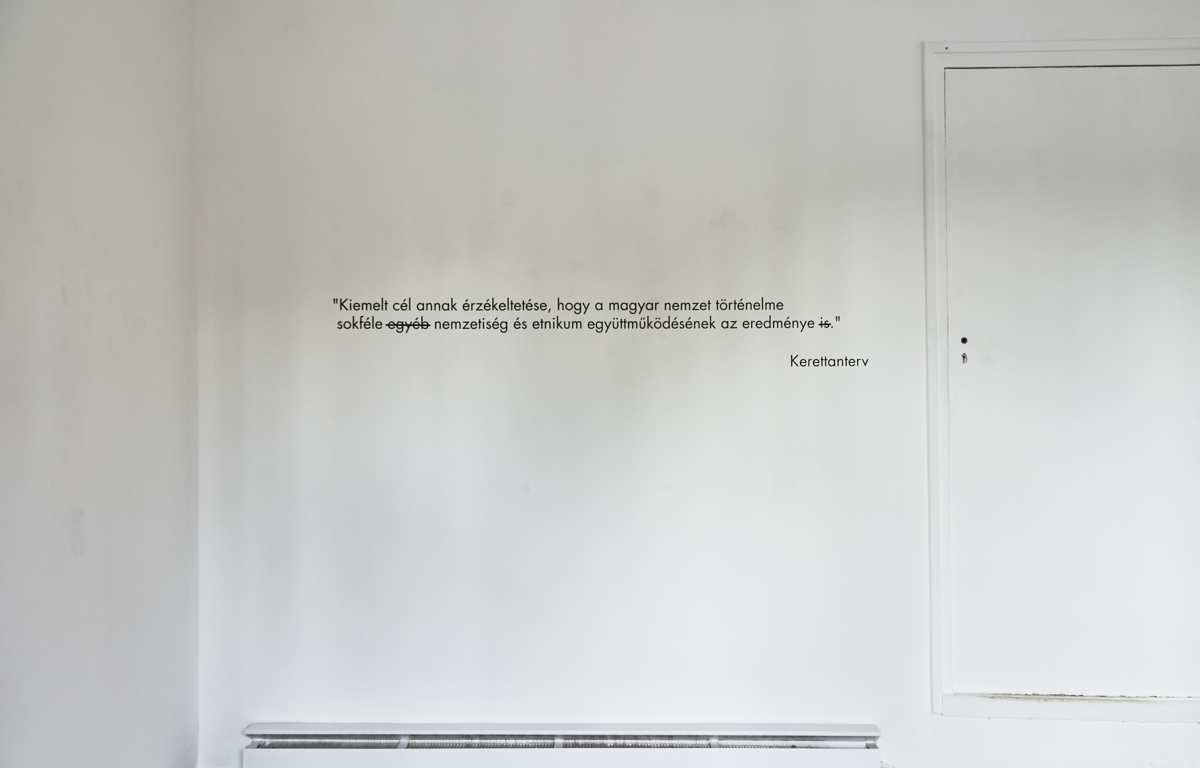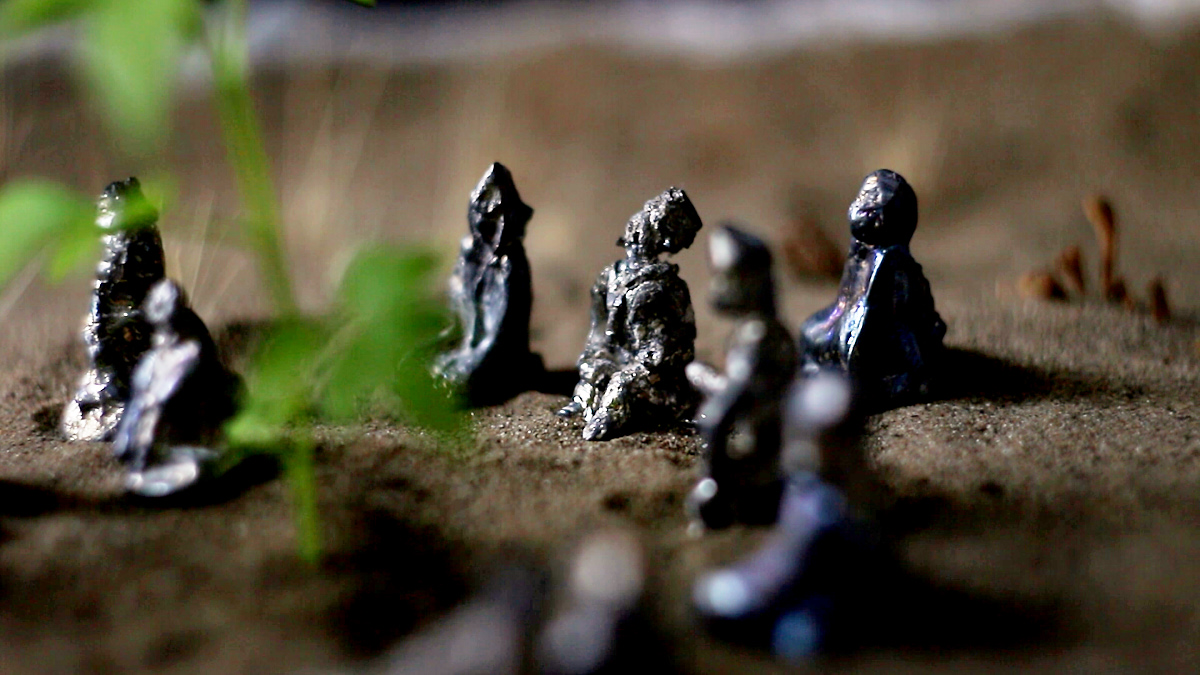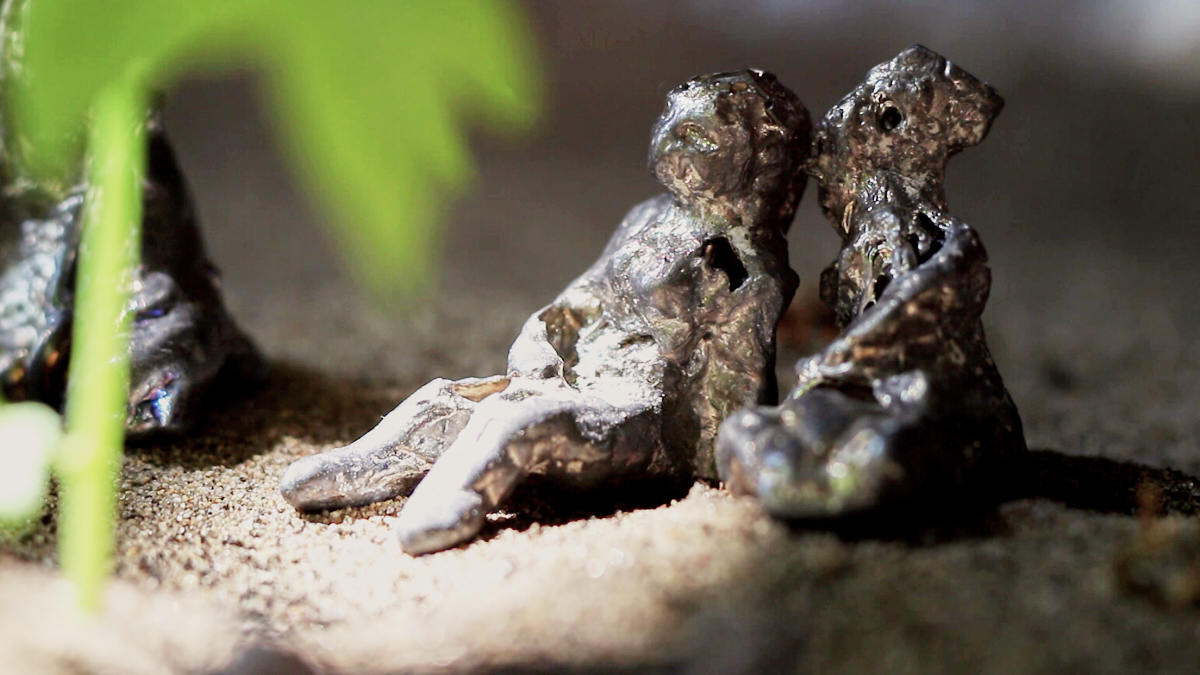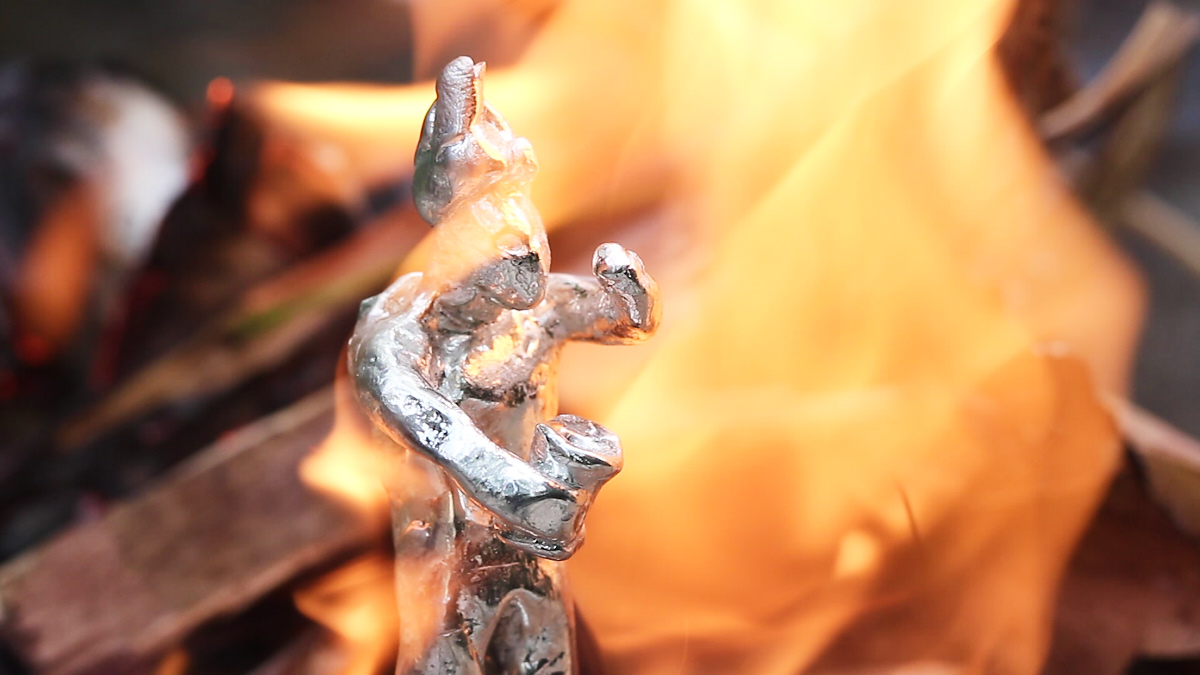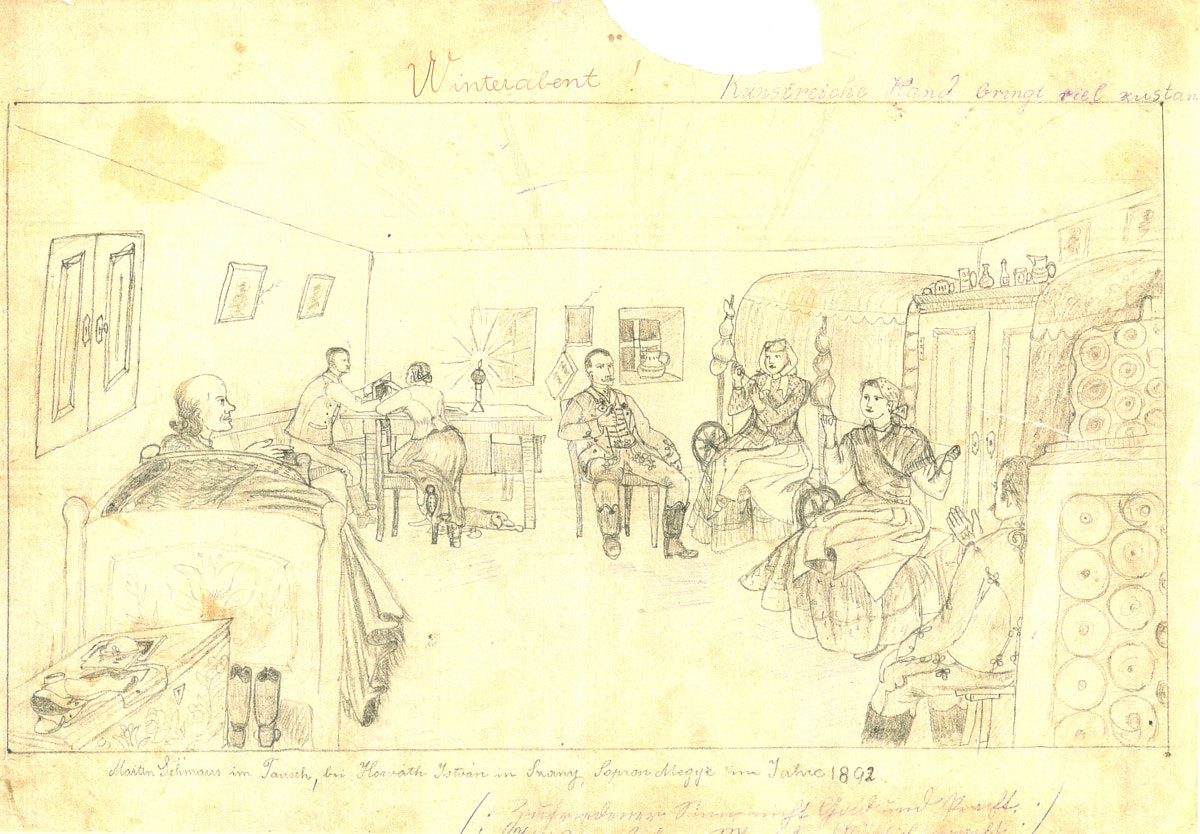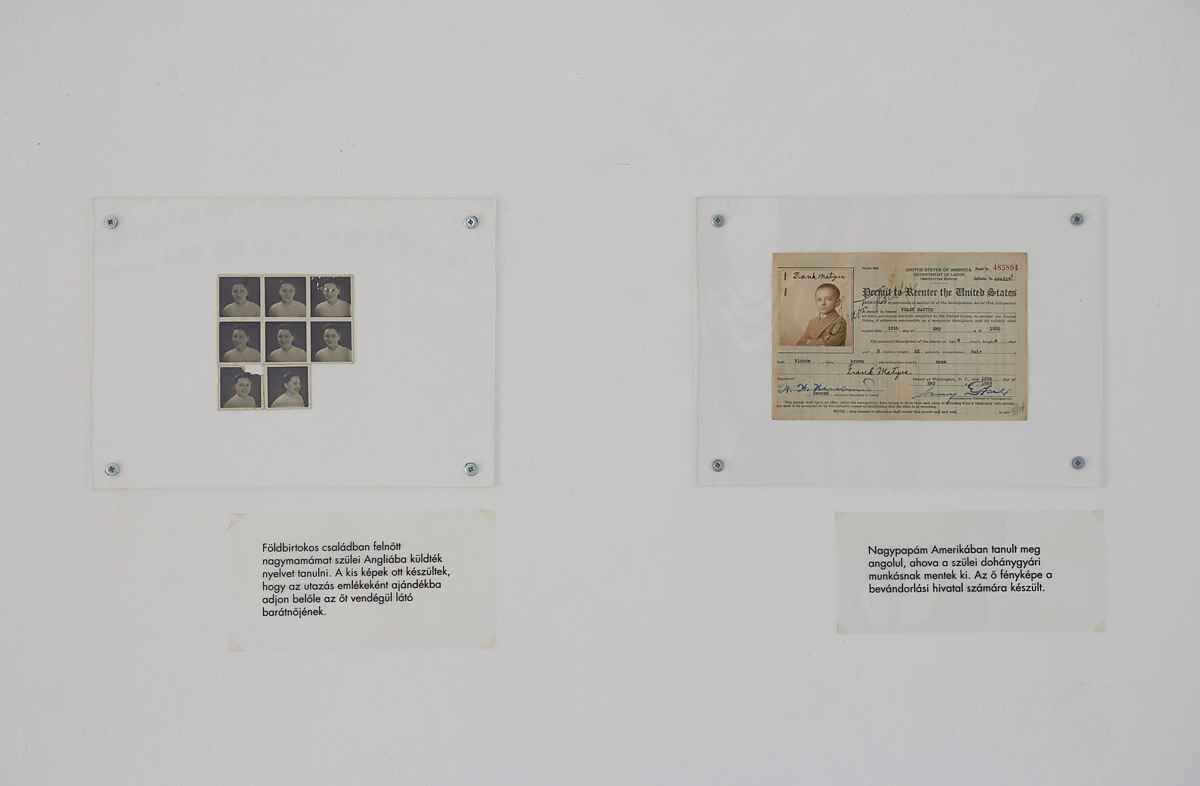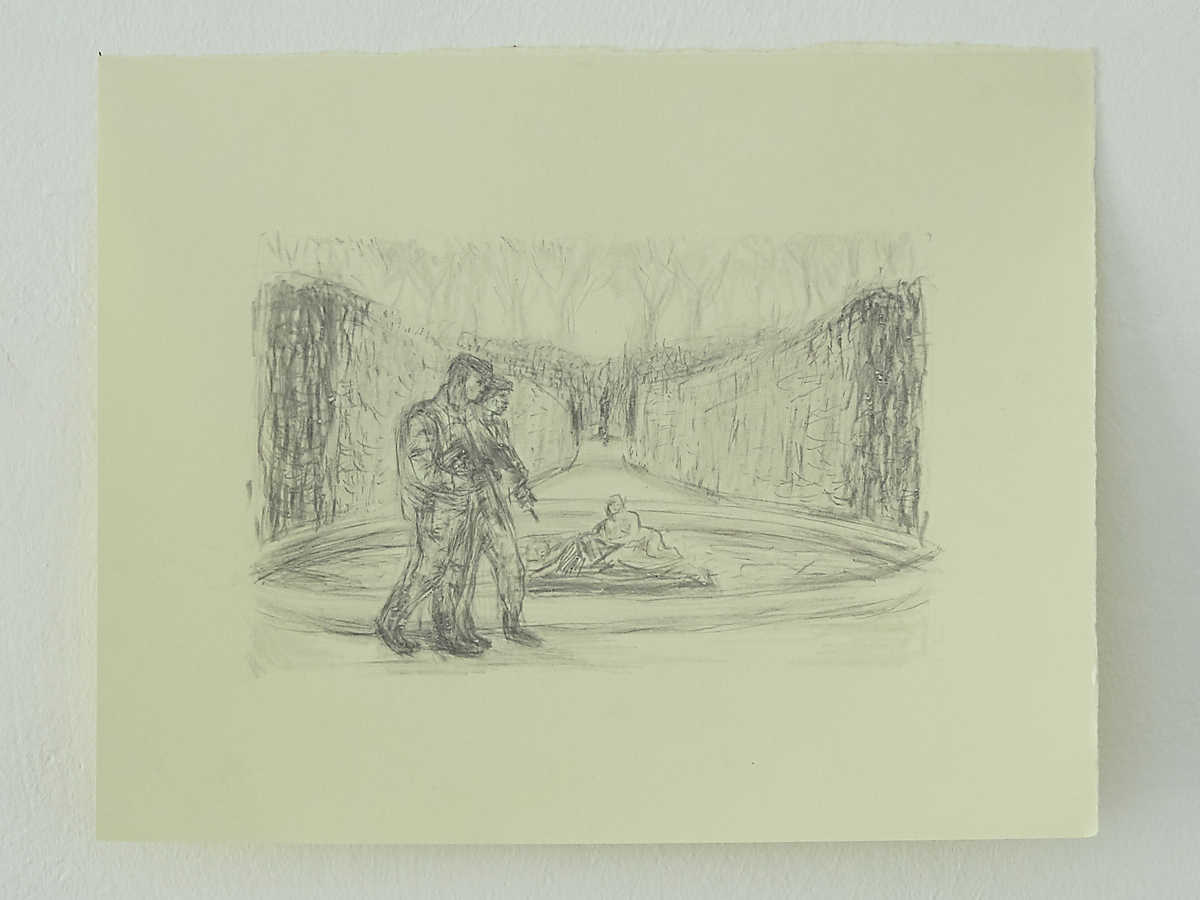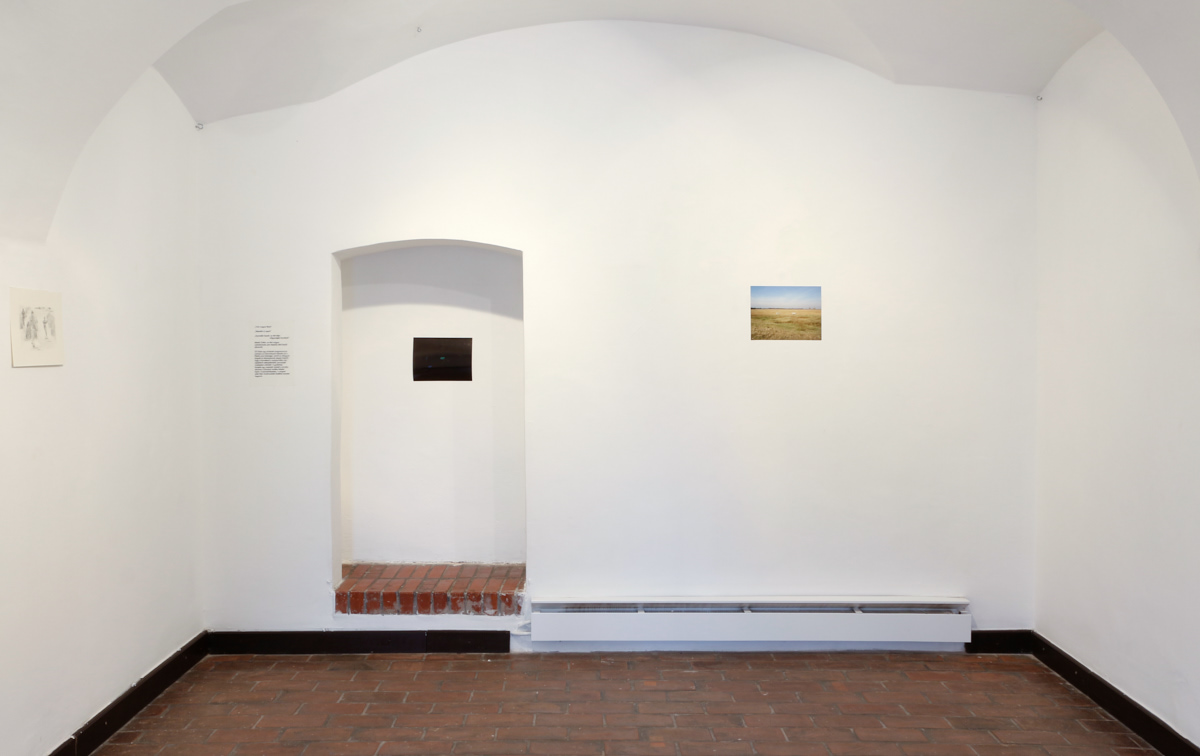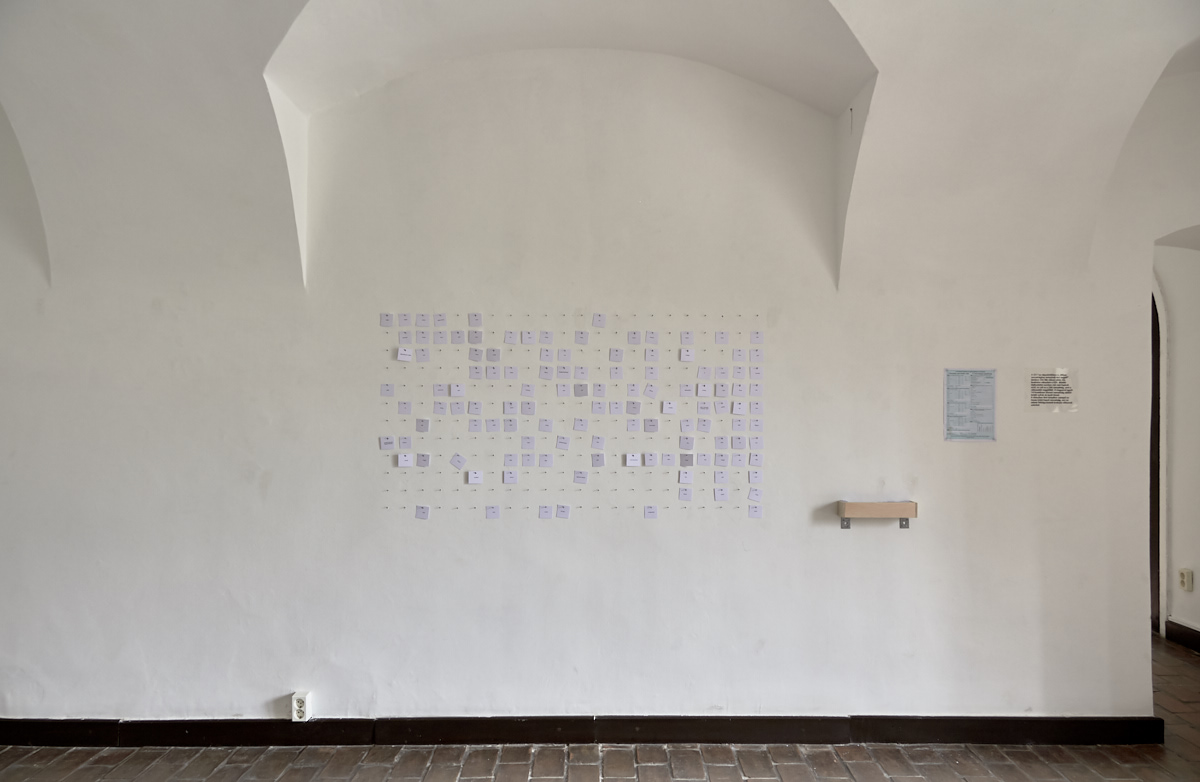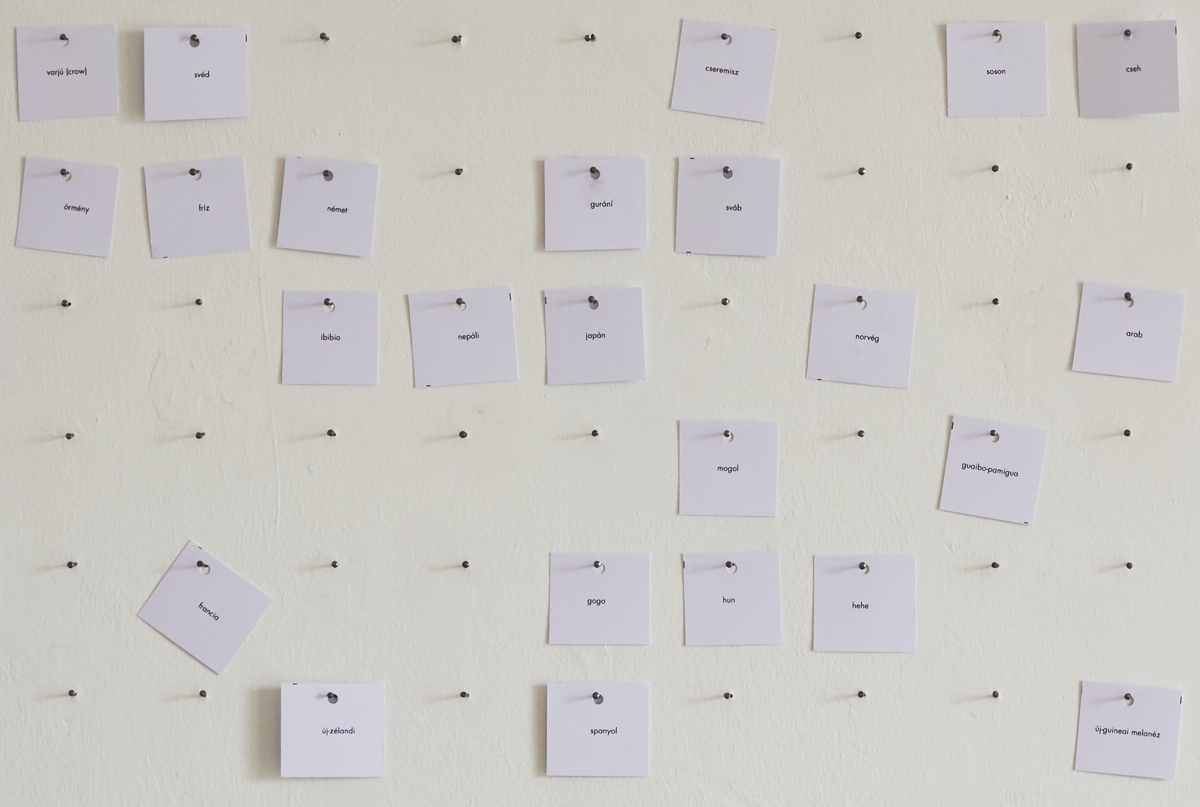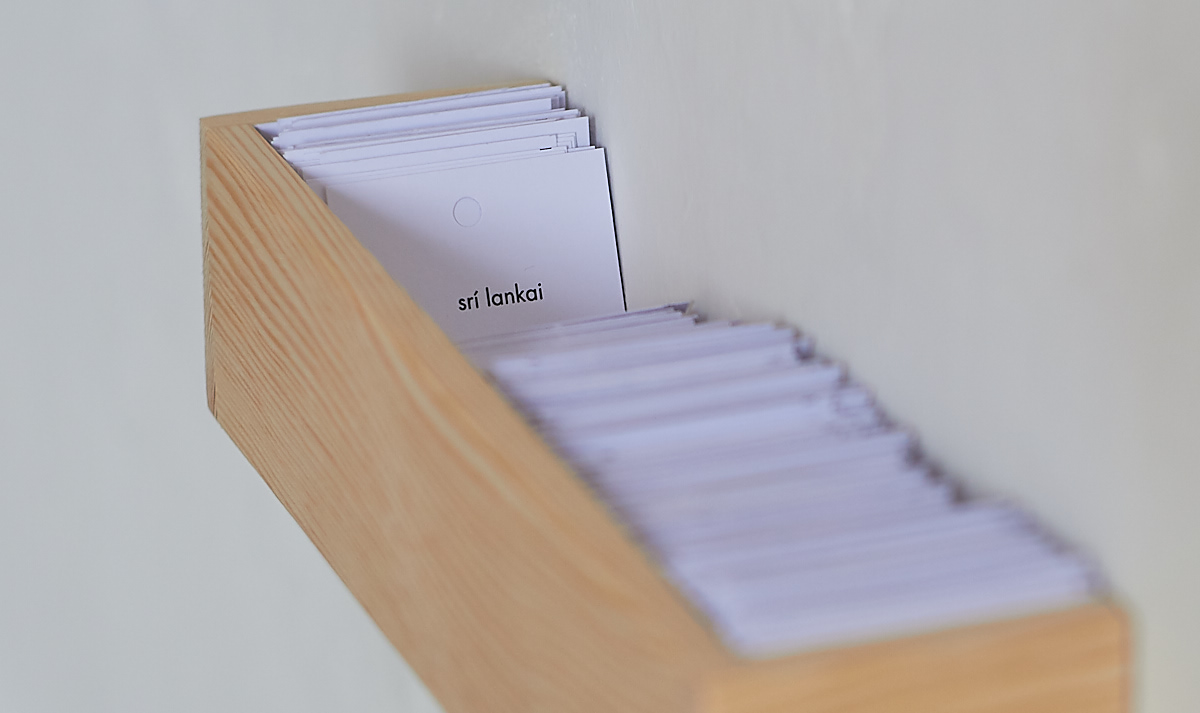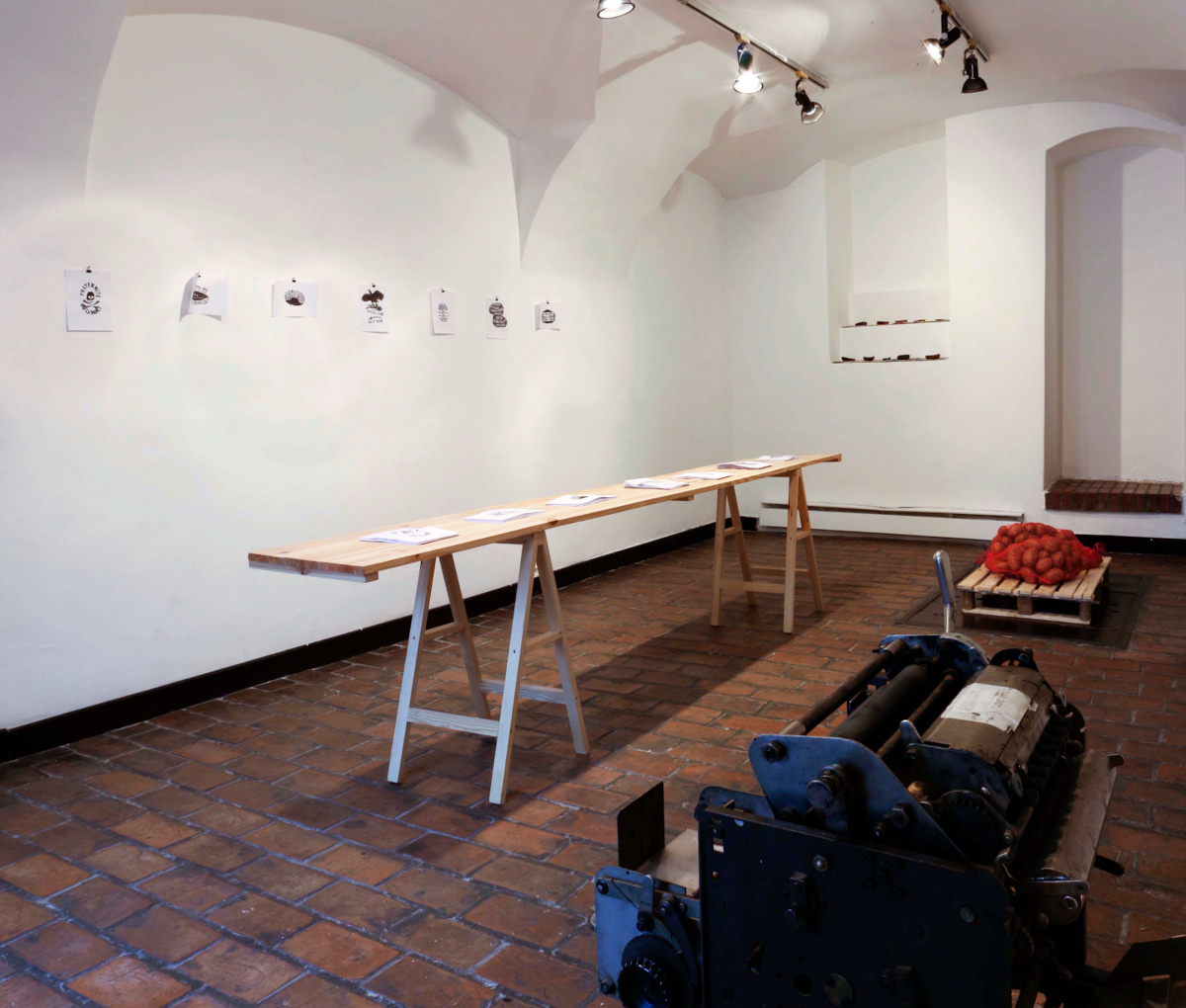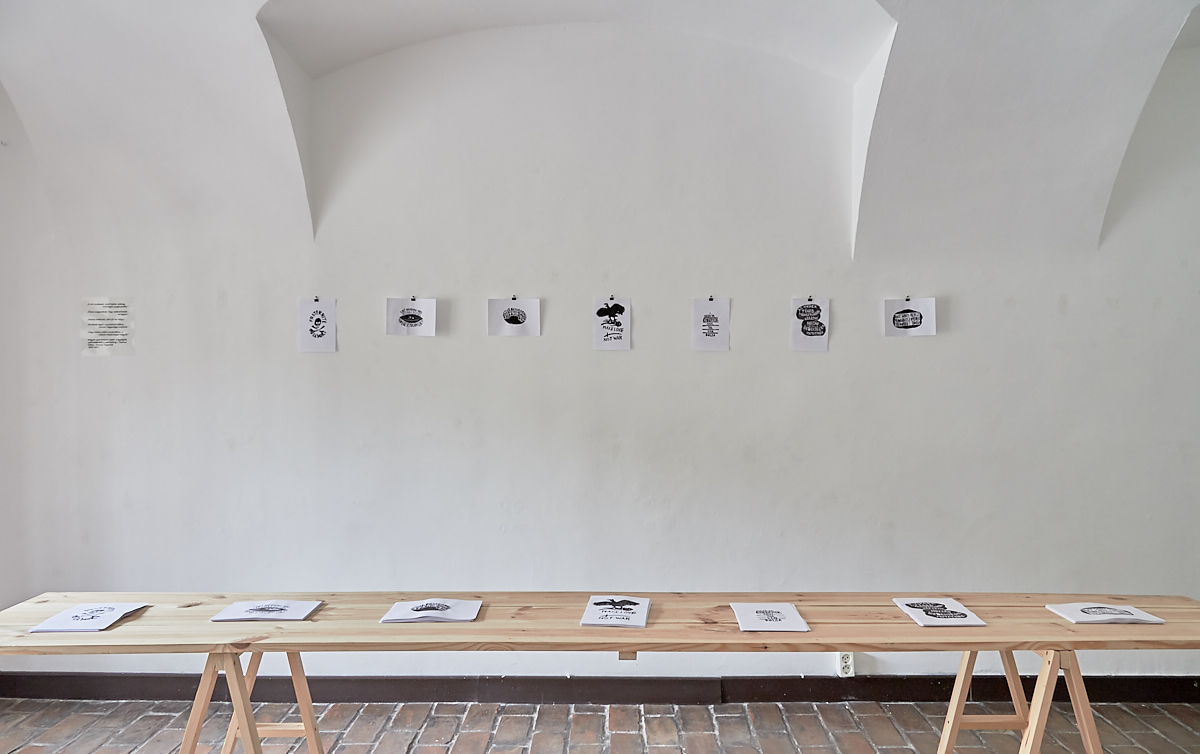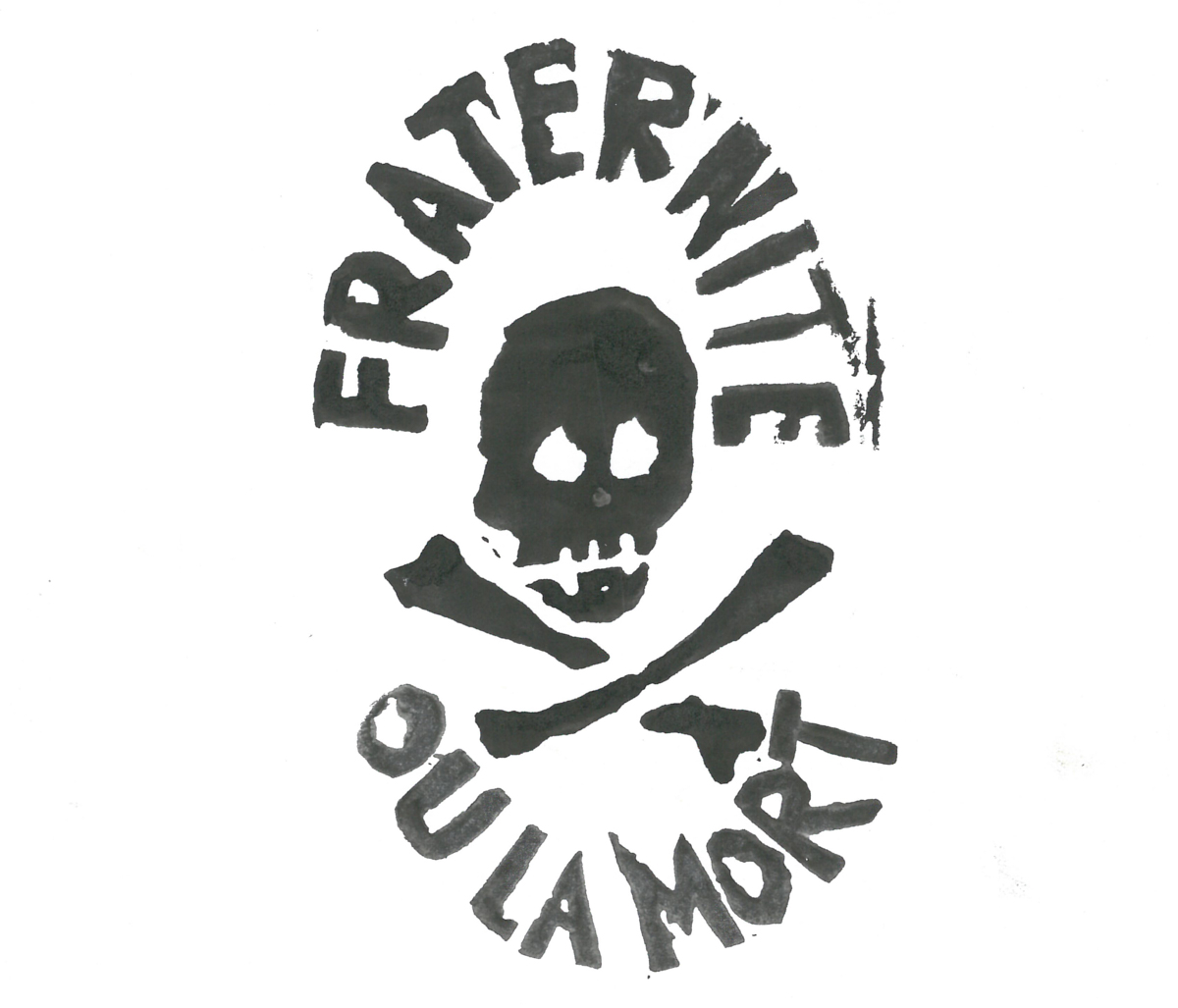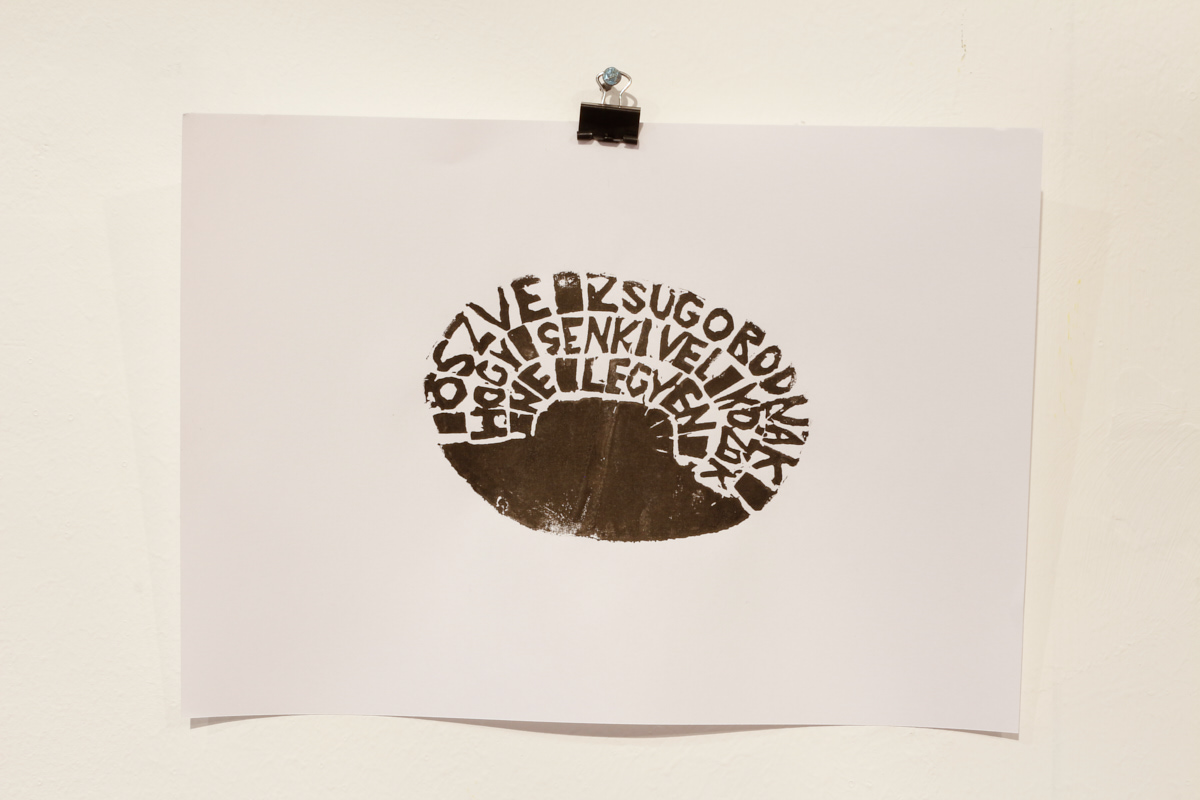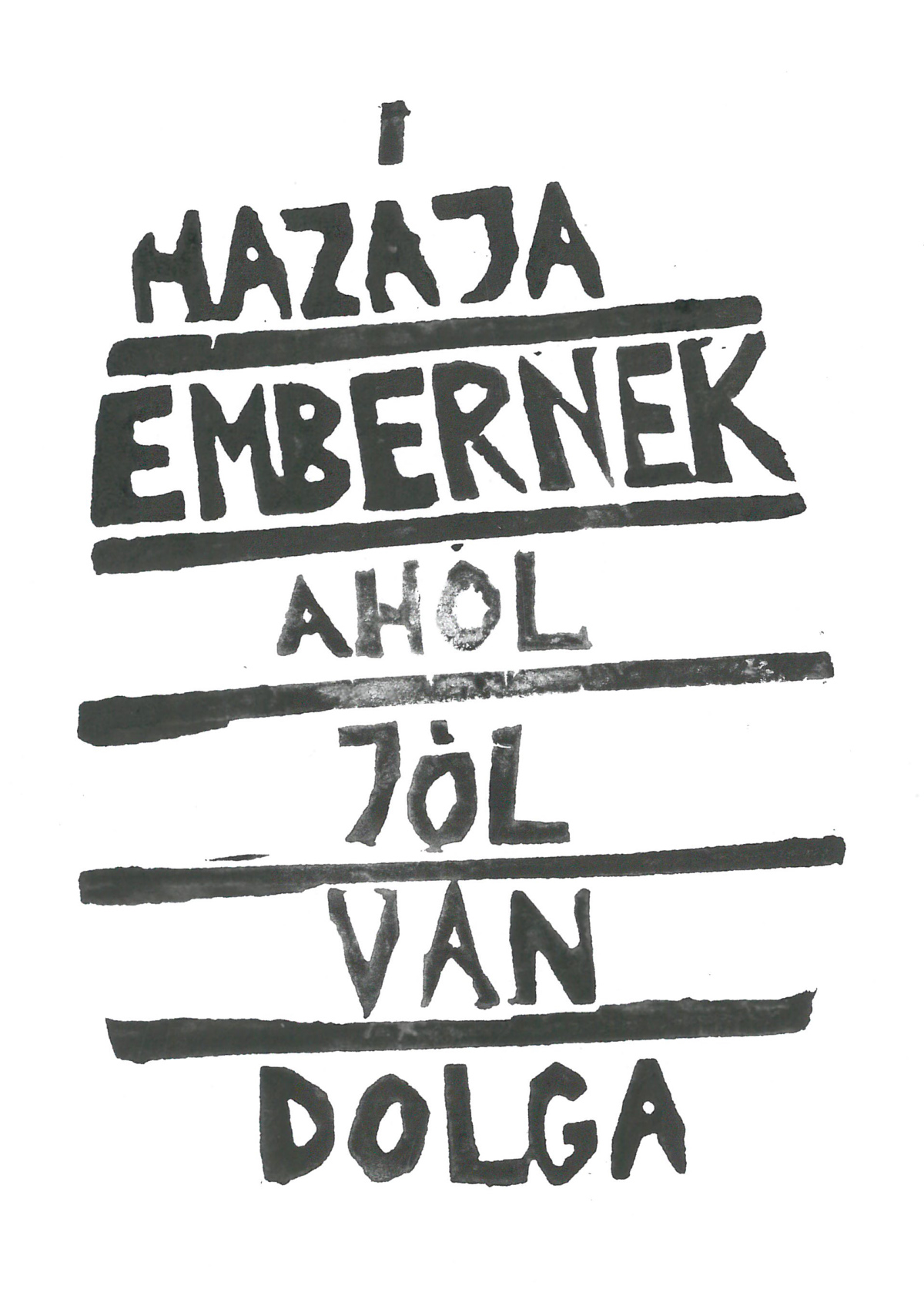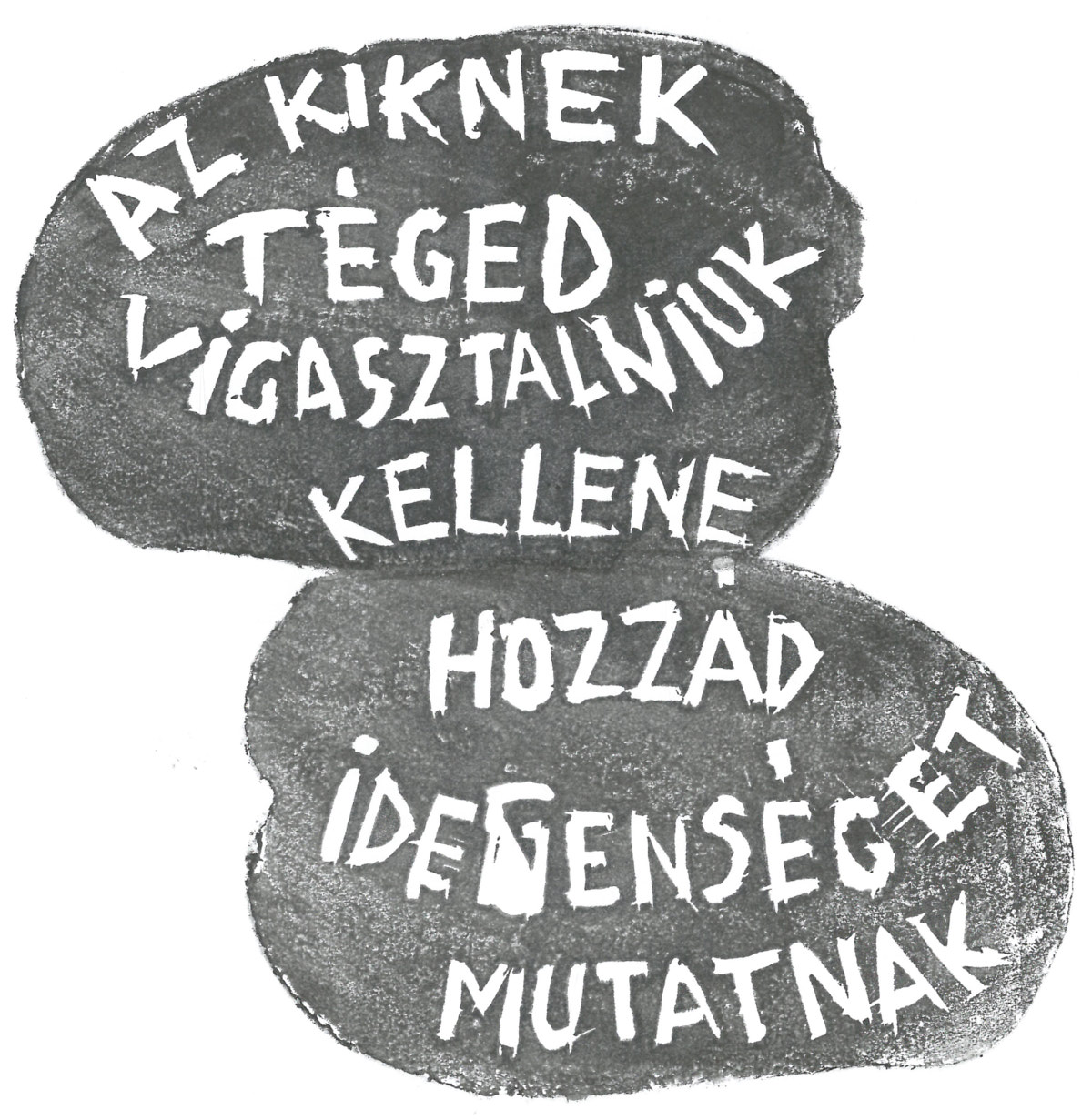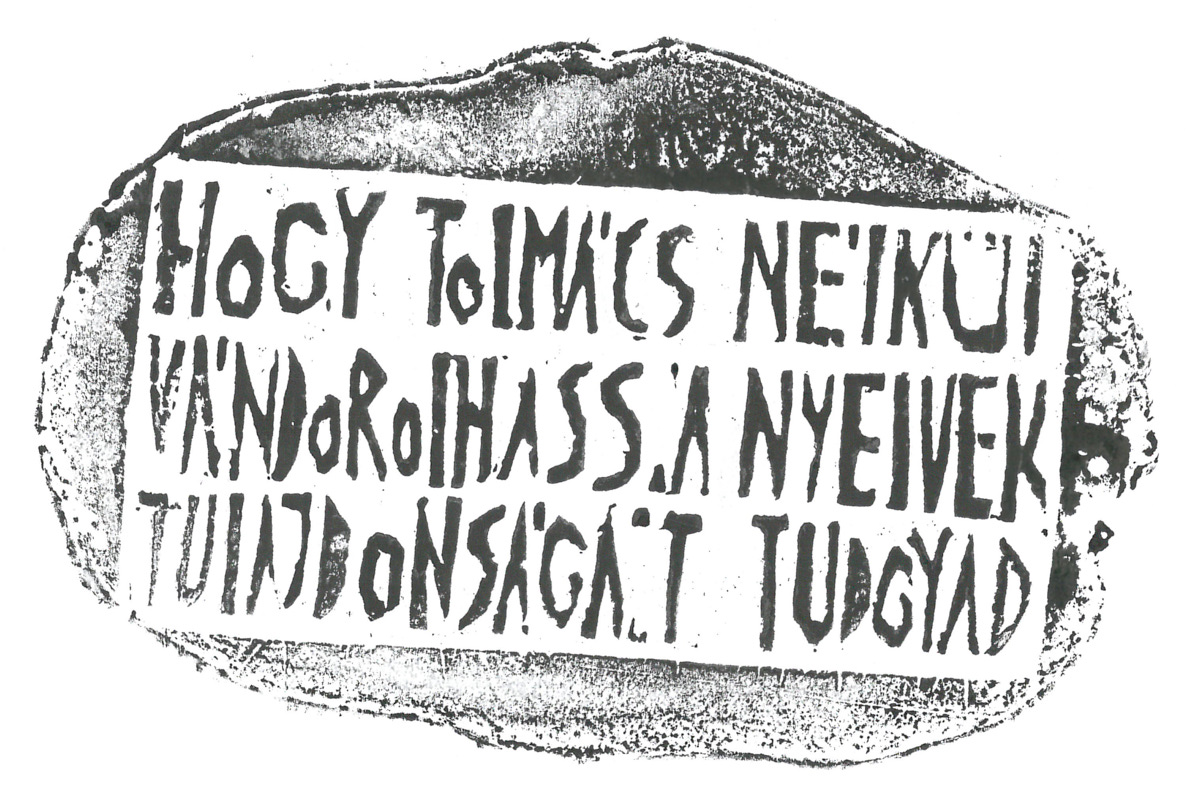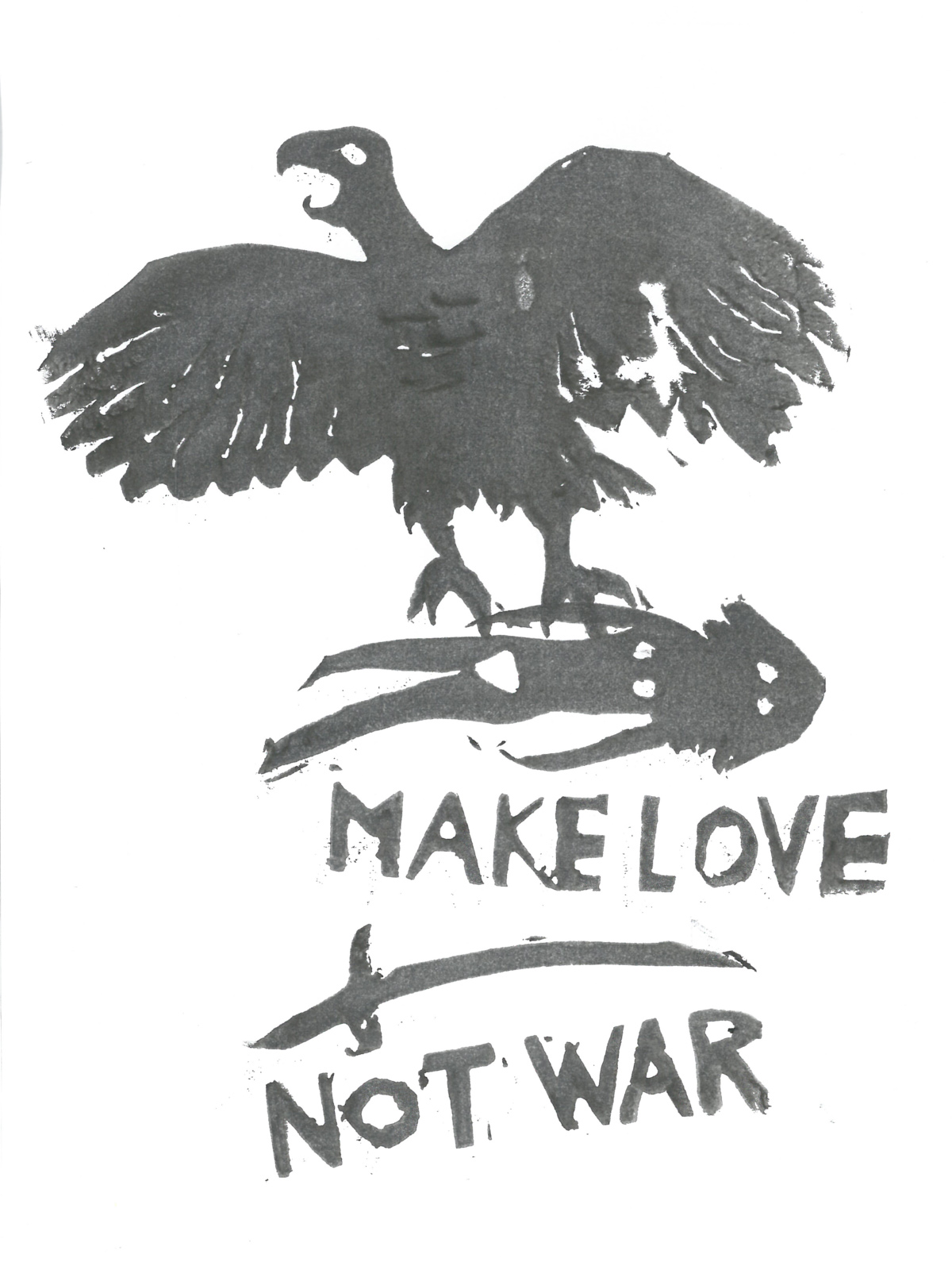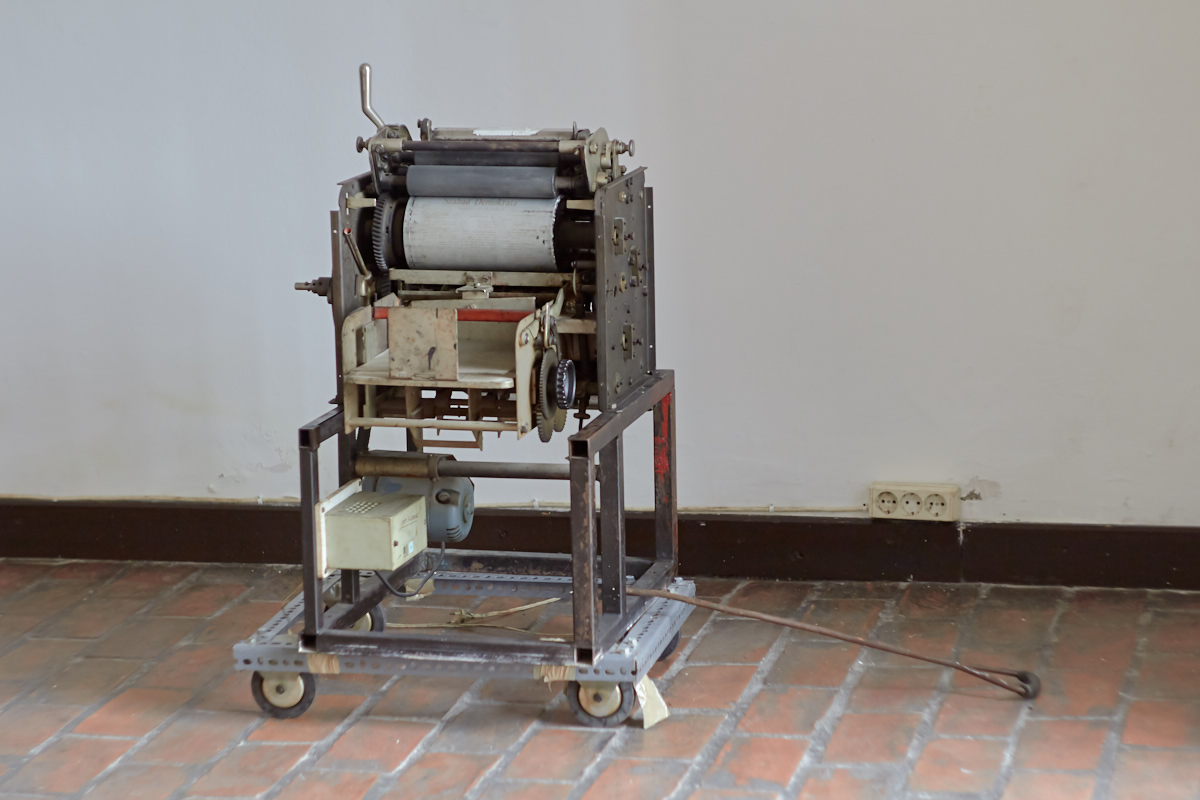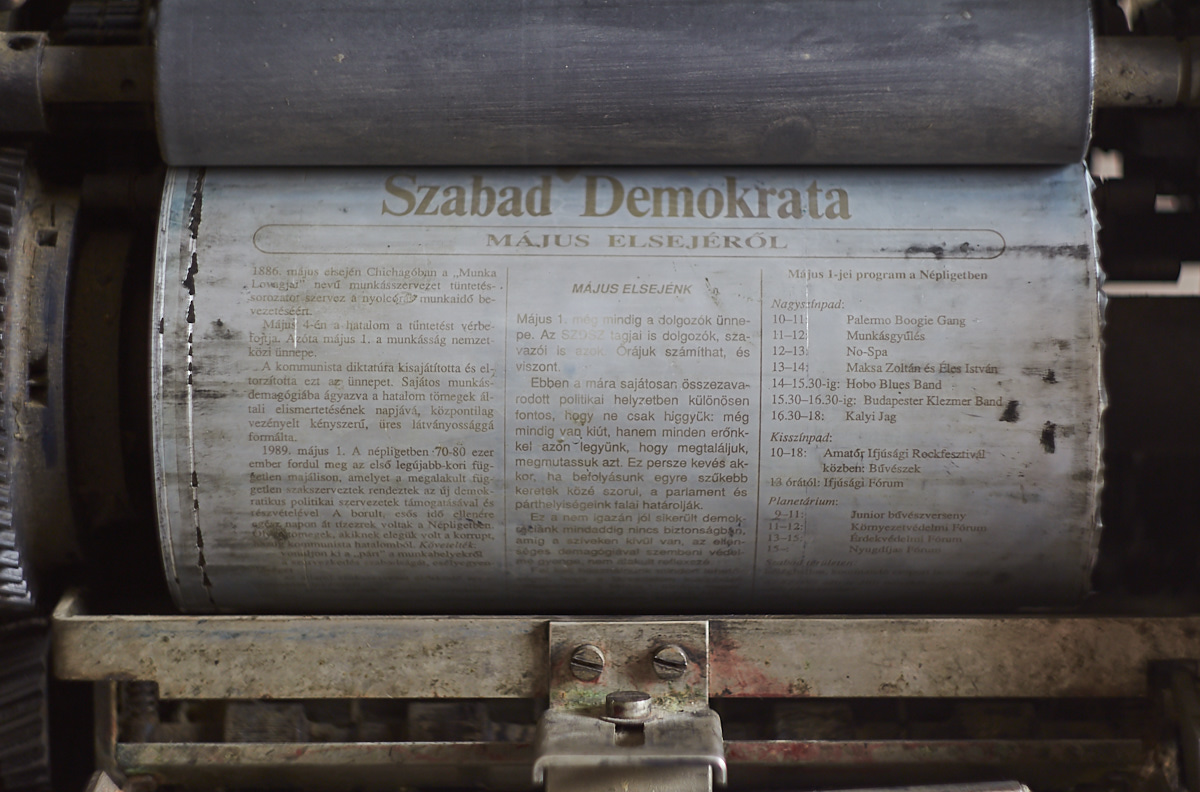exhibition
with: Orsolya Barna
— Imagined Kinship, Budapest Gallery, Budapest, 2015
Imagined Kinship
1ST ROOM
Correction of the National Curriculum
"One of the important goals is to demonstrate that the history of the Hungarian nation is the product of cooperation between many other nationalities and ethnicities too." / National Curriculum
Gold in a Potato Casting Mold
2ND ROOM
Blood Oath Contract Theory
diorama video
With the diorama of miniature metal sculptures from different low melting point metals (lead, tin, bismuth, and zinc) we are telling the mythical story of the blood oath of the Hungarian’s ancestors. This myth is often quoted as the origin story of the belonging to the Hungarian nation based on the "right of blood". We present it from a different point of view where it shows its inherent message: people who had neither a common language nor a sense of community could become members of an alliance of interest. The narration of the video is a text montage from historical texts about the Hungarians, current scientific studies on the multiethnicity of the ancestors of nowadays Hungarians, and political philosophy on the social contract.
With the diorama of miniature metal sculptures from different low melting point metals (lead, tin, bismuth, and zinc) we are telling the mythical story of the blood oath of the Hungarian’s ancestors. This myth is often quoted as the origin story of the belonging to the Hungarian nation based on the "right of blood". We present it from a different point of view where it shows its inherent message: people who had neither a common language nor a sense of community could become members of an alliance of interest. The narration of the video is a text montage from historical texts about the Hungarians, current scientific studies on the multiethnicity of the ancestors of nowadays Hungarians, and political philosophy on the social contract.
3RD ROOM
Child Exchange
The institution of child exchange existed for several centuries. Until WWI, it was customary for families of different ethnicities to exchange children between the ages of 8 and 12 for a few years, thereby creating an opportunity for the children to learn new languages and establishing economic ties. Children sent away to learn German, Slovak, or Hungarian were regarded as members of the host family, and they addressed the host parents as mother and father in the language used in the household. Children who had been exchanged in this manner often kept in touch for their entire lives, writing to each other and occasionally even asking each other to be the godparents of their children.
Martin Schmauss was twelve years old when, in 1892, he spent a year with the family of János Horváth in Szany, while Horváth’s son, József, lived with the Schmauss family in Mönchhof.
Martin Schmauss was twelve years old when, in 1892, he spent a year with the family of János Horváth in Szany, while Horváth’s son, József, lived with the Schmauss family in Mönchhof.
Martin Schmauss: Winterabent!
/ Winter Evening!
/ Winter Evening!
Martin Schmauss: Szanyi Bucsu
/ Indulgence at Szany
/ Indulgence at Szany
Grandparents
My grandmother, who came from a family of landowners, was sent to England to learn English. The small pictures were taken there so that she would be able to give them to her hostess friend as memories of her visit.
My grandfather learned English in the United States, where his parents went to work as laborers in a tobacco factory. His photograph was taken for the office of immigration.
My grandfather learned English in the United States, where his parents went to work as laborers in a tobacco factory. His photograph was taken for the office of immigration.
Sibling Blood Oath
reenactment of a folk tradition
“Székely girls and boys of Bukovina, after having finished their studies and reached an age at which they were old enough to choose their own friends, adopted peers who were of the same gender but who belonged to different clans, and whom they loved very much and wanted to have as siblings. On the day following the Feast of the Assumption (16 August), one of the two sibling-nominees suggested to the other that from now on they be siblings. They pricked their middle fingers with a needle and simultaneously sucked the blood that sprang from the wound. From this point on, they called each other sibling, even in front of others.” (Encyclopaedia of Hungarian Ethnography)
“Székely girls and boys of Bukovina, after having finished their studies and reached an age at which they were old enough to choose their own friends, adopted peers who were of the same gender but who belonged to different clans, and whom they loved very much and wanted to have as siblings. On the day following the Feast of the Assumption (16 August), one of the two sibling-nominees suggested to the other that from now on they be siblings. They pricked their middle fingers with a needle and simultaneously sucked the blood that sprang from the wound. From this point on, they called each other sibling, even in front of others.” (Encyclopaedia of Hungarian Ethnography)
Overtone Flute for Two
We modified the overtone flute, a traditional musical instrument in every country of the region. We placed two blowing parts to the flute to make it playable only with another player.
4TH ROOM
French Soldiers in French Formal Gardens
It was in the garden of Notre Dame that we first noticed armed soldiers in formation, patrolling the area. We realized that the soldiers were members of the Foreign Legion. This branch, initially used to expand the colonial empire, now in “vigipirate” in a French formal garden, in a symbol of imposed order.
LET THERE BE SLOWER DAWN!
“Let there be more Hungarian light!”
“Let there be a wholer new sun!”
“Let there be faster dawn and complete illumination of life!”
(Slogans authored by Zoltán Meskó, founder of the Hungarian National Socialist Agricultural Labourers and Workers Party)
In 2014, the municipality allowed an abandoned property to be used for a series of art events. Based on the objects and documents that had been left there, it soon became clear that after the fall of communism the location had been used as the office of multiple newly re-established far-right organizations. At the center of the meeting place is a trapdoor leading to the cellar, from where one can access nearby streets. Inside the cellar complex, on the wall below the stage, we left a message painted with phosphorescent, glow-in-the-dark paint: Let there be slower dawn!
A new chapter of this project ⇝
“Let there be a wholer new sun!”
“Let there be faster dawn and complete illumination of life!”
(Slogans authored by Zoltán Meskó, founder of the Hungarian National Socialist Agricultural Labourers and Workers Party)
In 2014, the municipality allowed an abandoned property to be used for a series of art events. Based on the objects and documents that had been left there, it soon became clear that after the fall of communism the location had been used as the office of multiple newly re-established far-right organizations. At the center of the meeting place is a trapdoor leading to the cellar, from where one can access nearby streets. Inside the cellar complex, on the wall below the stage, we left a message painted with phosphorescent, glow-in-the-dark paint: Let there be slower dawn!
A new chapter of this project ⇝
Two Hungarian Grey Bull at the Puszta
Census
241 different answers were provided to the question “To what ethnicity do you consider yourself to belong?” in the 2011 census – the Hungarian Central Statistical Office informed us in a response to our letter. However, we did not receive any further information regarding what these 241 ethnicities were besides the 14 officially recognized ethnicities.
In the box, we placed the 602 ethnicities that were assigned statistical codes, and the visitors could choose what they want to place into the 241 places in the wall.
In the box, we placed the 602 ethnicities that were assigned statistical codes, and the visitors could choose what they want to place into the 241 places in the wall.
5TH ROOM
Fraternité ou la mort / Fraternity or Death
The image is based on a counter-revolutionary print from the end of the French Revolution where the motto of the revolution was associated with a skull and crossbones and guillotines. We excluded liberty and equality from the original motto to change the heroic meaning into a horrific vision of a society based on an exclusionist concept of kinship.
Early Examples of Common, Pagan, Homeland, Alien, and Language
We searched for early examples of words to contemplate on the different usages and contexts in the Encyclopaedia of the Hungarian Language: from the Oldest Written Documents to the Language Reform by Gábor Szarvas – Zsigmond Simonyi from 1890-1893.
Common
They shrink to have no common with anyone
Pagan
What they say is all vanity, all paganism
Homeland
People's homeland is where they are well-off
The example sentence of the dictionary is from a collection of proverbs (by János Baronyai Decsi in 1598) who interpreted the famous quote “The whole world is my homeland” (from Zenobius in Erasmus Roterodamus: Adagia 1500-1536) based on Aristophanes and Cicero quotes. The idea of interchangeable homelands.
The example sentence of the dictionary is from a collection of proverbs (by János Baronyai Decsi in 1598) who interpreted the famous quote “The whole world is my homeland” (from Zenobius in Erasmus Roterodamus: Adagia 1500-1536) based on Aristophanes and Cicero quotes. The idea of interchangeable homelands.
Alien
The ones who should comfort you show alienation
Language
To travel without an interpreter, you must know the nature of languages
Make Love Not War
The Hungarian’s legendary progenitor, the turul bird grabbing his legendary mate Emesu, meanwhile dropping his sword (associated with the turul among others in the emblem of the National Socialist Workers Party).
A Stencil Duplicator of Samizdats
This duplicator was used to make illegal copies to outwit the censorship until it was last used during the Fall of Communism for a flyer of a Workers' Day with the title Free Democrat. Borrowed from Budapest History Museum.
